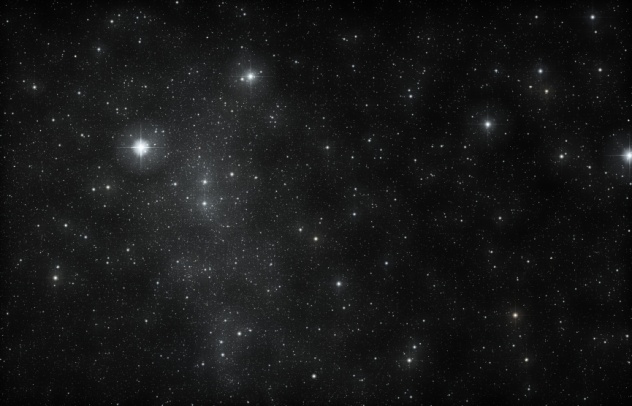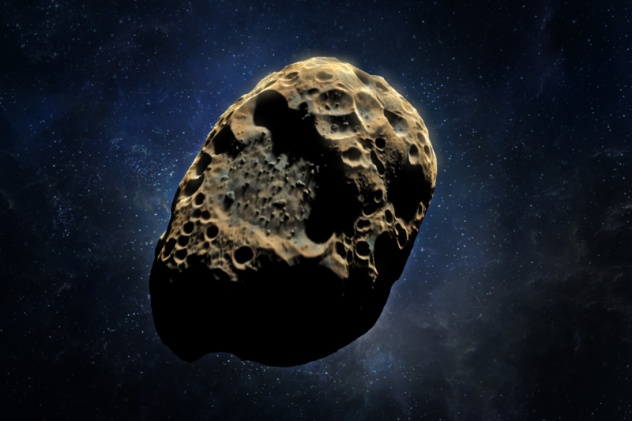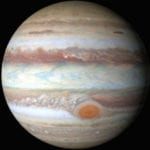 Mysteries
Mysteries  Mysteries
Mysteries  Miscellaneous
Miscellaneous 10 of History’s Most Bell-Ringing Finishing Moves
 History
History 10 Great Escapes That Ended Right Back in Captivity
 Weird Stuff
Weird Stuff 10 Fascinating Things You Might Not Know About Spiders
 Food
Food 10 Everyday Foods You Didn’t Know Were Invented by the U.S. Military
 History
History 10 Odd Things Colonial Americans Kept at Home
 Weird Stuff
Weird Stuff 10 Superstitious Beliefs That Once Consumed Entire Cultures
 History
History 10 Bizarre Friendly Fire Incidents in Military History
 Technology
Technology 10 Modern Technologies That Accidentally Imitate Ancient Magic
 Mysteries
Mysteries 10 Mysteries of the Human Genome
 Mysteries
Mysteries 10 Strange Unexplained Mysteries of 2025
 Miscellaneous
Miscellaneous 10 of History’s Most Bell-Ringing Finishing Moves
 History
History 10 Great Escapes That Ended Right Back in Captivity
Who's Behind Listverse?

Jamie Frater
Head Editor
Jamie founded Listverse due to an insatiable desire to share fascinating, obscure, and bizarre facts. He has been a guest speaker on numerous national radio and television stations and is a five time published author.
More About Us Weird Stuff
Weird Stuff 10 Fascinating Things You Might Not Know About Spiders
 Food
Food 10 Everyday Foods You Didn’t Know Were Invented by the U.S. Military
 History
History 10 Odd Things Colonial Americans Kept at Home
 Weird Stuff
Weird Stuff 10 Superstitious Beliefs That Once Consumed Entire Cultures
 History
History 10 Bizarre Friendly Fire Incidents in Military History
 Technology
Technology 10 Modern Technologies That Accidentally Imitate Ancient Magic
 Mysteries
Mysteries 10 Mysteries of the Human Genome
10 Crazy Hypotheses To Explain Odd Astronomical Observations
The universe is full of mysteries, and the explanations are often crazier than the observations. While it sometimes might seem like the solutions are pulled out of a hat, the hypotheses and theories are always backed by cold, hard science.
10 Early Dark Matter Was A Party Animal

Dark matter remains annoyingly mysterious due to its refusal to interact with fellow particles and forces. Now, a new idea formulated by a team of 18 scientists explains the mysterious substance’s bashful nature. They propose that dark matter wasn’t always a cosmic recluse. In the universe’s younger, scalding plasma phase, dark matter commingled with normal matter fabulously thanks to the surrounding frenzy, which spurred it on. But as the universe cooled, dark matter settled down and lost its ability to influence electromagnetic forces.
Dark matter’s Jekyll and Hyde act is due to the play of quarks, the elementary particles that stack together to form the always useful hadrons, such as neutrons and protons. At low temperatures, quarks coagulate into the aforementioned larger units, but at the wildest temperatures, they may interact indiscriminately with other particles. Interestingly, the fact that ordinary and dark matter congregations are so similar in size suggests that some sort of equilibrium was struck between the two early on.
9 Galactic Wormhole
Scientists now say that wormholes may not be impossible after all, as long as we can scrounge up some exotic matter. Unfortunately, we’re a bit short on ingredients, and it’s uncertain that such a significant amount could even exist without exploding catastrophically in our face. Luckily, there’s a second way to blast yourself a nice wormhole. According to a jointly offered hypothesis from Indian, Italian, and North American scientists, you just need mind-blowing amounts of mass . . . like in the centers of Milky Way–like galaxies, for example.
We live in a distinctly Milky Way–like galaxy, so it’s hypothesized that our own galactic center, conveniently located only 25,000 light-years away, harbors the conditions for a wormhole. The neighborhood is densely packed with matter not only from stars, hot gas clouds, and a monstrous black hole called Sagittarius A*, but also obscene amounts of dark matter. All this mass confined to a relatively small galactic center might just be enough to turn the fabric of space-time in on itself, creating a shortcut between distant parts of the universe.
At least, that’s the idea formulated by combining general relativity’s arcane knowledge with a density map of galactic dark matter. It’s then possible that innumerable galaxies secretly serve as dark matter wormholes, linking the universe together via an unseen “galactic transport system.”
8 Volcanic Asteroids

A haul of over 600 space rocks known as the Almahata Sitta meteorites split off from an asteroid named 2008 TC3 and delivered themselves to the Sudanese Nubian Desert in 2008. They paint an unexpected picture of the early solar system: Just 6.5 million years after the formation of the solar system’s first solid bodies, the areas around Earth might have been swarming with molten, volcanic asteroids.
The unique Almahata Sitta specimens possess a variety of minerals never before found together in a single chunk, including an embarrassment of silica-rich urelites. According to astronomers, these are produced only by near-instantaneous crystallization succeeding a violent volcanic event, precluding the possibility that the rare rocks formed as a result of the explosive forces accompanying meteoric impacts.
Therefore, astronomers suggest that the young solar system housed at least one volcanically active meteorite. How does an asteroid become volcanic? Billions of years ago, the teething solar system was a Campbell’s Chunky soup of constantly colliding rocky bodies. This runaway pinball effect and the residual energy left over from the catastrophic impacts turned asteroid 2008 TC3 (and many others) into molten hellscapes.
7 Dark Matter Hairs
Although we’ve never directly glimpsed dark matter, simulations and observations have revealed some of its quirky tendencies. The mystery substance is not only electromagnetically apathetic, but can also be indolent, some of it moving little from its cozy gravitational bed. Stranger still, NASA JPL’s Gary Prezeau suggests that particles of dark matter may organize themselves into cosmic conga lines.
The gigantic streams of politely ordered dark matter particles—if dark matter is indeed formed of particles—often dwarf our solar system while entwining themselves like a vanilla-chocolate frozen yogurt swirl from Costco. When the filaments encounter a big, rock-like object (like Earth) they root themselves in around it like so many hairs. If they were visible, the dark matter projections around Earth would make it look like a planetary porcupine.
And like the hairs sprouting from our heads, each filament begins as a thick, dense root and ends in a tenuous, spiky tip. If confirmed, the roots offer the easiest chance to study dark matter. They supposedly originate a mere 600,000 miles from Earth’s surface, or less than three times farther than the Moon, which dangles about 230,000 miles away.
6 A Hungry Sun
In exploring alien solar systems, astronomers have discovered many planetary bodies hugging close orbits around their stars, tracing much tighter paths than Mercury around the Sun. Yet within our solar system, this innermost cosmic highway is devoid of any significant objects. What gives?
A recent study from UNLV’s Rebecca Martin and Mario Livio proposes that long ago, a planetary body did inhabit this now empty region of space. It formed after gobbling up the inner solar system’s wayward debris and was then tragically gobbled itself by the ever-hungry devourer Sol, who like the Greek Titan Kronos, consumed his children.
Based on observations of extrasolar systems and the suspiciously barren void between our parent star and smallest planet, it’s possible that Mercury, Venus, Earth, and Mars once shared a playpen with a fifth rocky sibling. According to the researchers, a thick disc of cosmic chaff, located between the Sun and Mercury, survived long enough to cool and coalesce into a dense super-Earth. However, the extra planet didn’t last long and quickly succumbed to the Sun’s unrelenting gravity and appetite.
5 Backward Time
Time seems simple enough, but it’s infinitely complex and constantly discombobulates the finest minds. When did time begin? Why does it appear to only flow forward? If the direction of time is fixed, why do the fundamental laws work just as well formulaically when physicists introduce a drunk, backward-moving version of time? One hypothesis hopes to answer at least part of the conundrum: Our universe is not alone.
Time marches forward in our universe because of entropy. Since the early state of the universe was immaculately ordered into a single point, conditions must move toward a state of disorganization, and time gains directionality. At least that’s the current interpretation. One hypothesis suggests a sister universe, also spawned at the “moment” of the big bang, an odd place dominated by bizarro-time, which acts according to gravity, not thermodynamics. Furthermore, in this parallel existence, the arrow of time is reversed to compensate for our progressive seconds, minutes, and hours.
In a (very) small-scale, 1,000-particle partial representation of the universe, physicists observed that gravity can apparently coax the organization of the particles in either temporal direction. Another theoretical physics study also found that particles can experience reverse entropy and clean themselves up. Ultimately, researchers suggest a primordial split that rendered two sets of “time,” each traveling in the other direction.
4 Earth’s Orbital Tilt

Earth is odd. It’s the only planet we know of that’s inhabited with ungrateful lifeforms, and its orbit is unexpectedly tilted in relation to the Sun’s equator. However, orbital weirdness is not exclusively a local puzzle; it’s observed abroad as well. In the universe at large, astronomers have seen many gas giants close to their parent stars but on unexplained titled orbits around them.
That shouldn’t be, assuming that these planets had formed from debris disks around their stars, as planets are wont to do, and were then seduced by gravity. According to Caltech astronomer Konstantin Batygin, these shifts are caused by the gentle (and sometimes not so gentle) tugs exerted by partnering stars. Snce most star systems are binary, this might explain the number of wayward orbits .
Intriguingly, it’s a tidbit of proof that the Sun may have once enjoyed the companionship of a secondary star. It has long since moved on, hopefully to better things, but it left behind a lasting reminder—Earth’s wonky orbit.
3 First Ever Stars
When the big bang so kindly burped out the universe almost 14 billion years ago, it did so in the form of hydrogen, helium, and lithium. The heavier elements responsible for all sorts of goodies like humans didn’t come about until the first massive stars smashed them up real good in the furnace of super- and hypernovae.
In the search for the universe’s earliest protagonists, astronomers try to sniff out objects deficient in the more complex elements. One standout was recently spotted by the European Southern Observatory’s Very Large Telescope in northern Chile. From deep space, it plucked the very faint photons of galaxy CR7, a relic from 13 billion years ago and (by far) the brightest early galaxy ever observed.
CR7 isn’t named in honor of Cristiano Ronaldo but rather for “COSMOS Redshift 7,” an identifier of how extensively the light has been stretched during its excruciatingly long journey from the early universe to the Very Large Telescope’s imagers. Therefore, its redness gives away its age. “COSMOS” refers to its location in the night sky. CR7 is located within a super-busy patch of space in the Sextans (Sextant) constellation.
The ancient galaxy is full of helium but, surprisingly, offers no hint of heavier elements. The discrepancy suggests the incredibly exciting possibility that astronomers have sighted the first generation of stars. These so-called Population III stars are the progenitors of the heavier elements that condensed into planets, more stars, and eventually, slimy meat beings.
2 Mega Rings
A young gas giant spiraling a young star known as J1407, which is only 434 light-years away from Earth, has confounded astronomers with its anomalous light curve. It’s expected that such a planet, much larger than even Jupiter, should blot a fair amount of its parent star’s light. However, there were periodic eclipses unlike anything seen before.
The culprit? A gigantic ring system, 200 times larger than Saturn’s, around the planet J1407b. Such a feature is the only way to explain the nature of the eclipses, which sometimes persist for weeks but sometimes allow the odd photon through, which would be impossible of a solid eclipsing body. These bouts of peek-a-boo make perfect sense, given the grainy nature of rings.
Each massive ring stretches tens of millions of miles in diameter, and J1407b is encircled by at least 30 of these icy, rocky, rings. Enticingly, astronomers have discovered gaps within the rings, most likely the result of exomoons sweeping away debris as they orbit. Unfortunately, the rings are only an ephemeral sight, as they’ll eventually condense into moons.
However, this opens up the fantastic possibility that planetary rings aren’t too uncommon around young planets, so who knows how much grander our gas giants loomed in their infancy!
1 Dark Matter Asteroids
A number of asteroid impacts and subsequent extinctions have paved our evolutionary pathway with the bones of mightier, fiercer creatures who would have never consented to man’s current dominion. But why do these impacts occur with such regularity? Do aliens have us in the crosshairs of a cosmic slingshot?
The answer, according to Harvard astrophysicists Lisa Randall and Matthew Reece, is just as otherwordly: A thick gob of dark matter, possibly up to 35 light-years thick, redirects cosmic missiles toward Earth. From its perch along our Milky Way’s central plane, it tugs at all sorts of asteroids and comets, coercing them toward our defenseless planet. According to past impacts, which occur in cycles roughly every 30 million years, the astrophysicists believe that their hypothesis is at least three times more likely than pure coincidence.
Other scientists are even cheekier in their assumptions of dark matter’s role in terrestrial affairs. The head of the Avoid Earth Extinction Association, Dayong Cao, suggests that space rocks passing through the dark matter congregation are imbued with its gravitational prowess and destructive properties.








